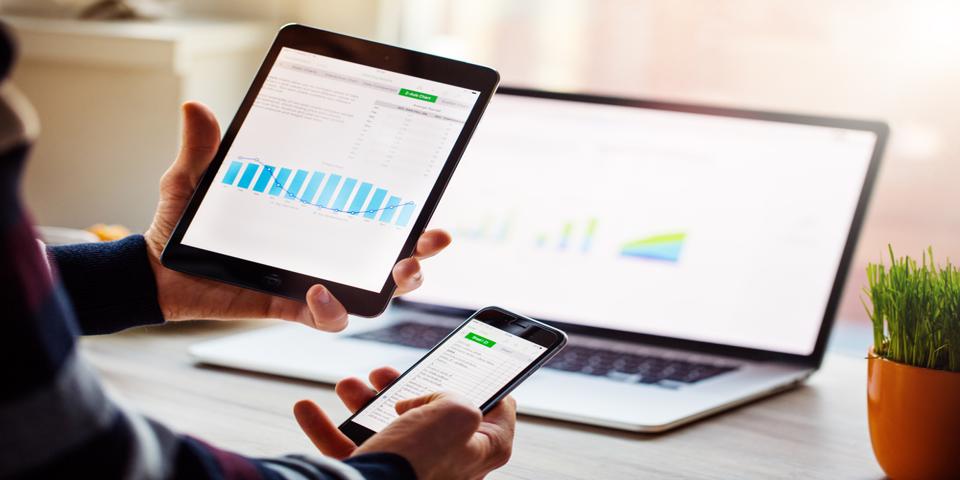
Look Back: Marketing Strategies for a Post COVID-19 World
The COVID-19 pandemic will end--as a platitude, it verges on insulting, but it is a practical reality, as well as a fervently-held hope.
When it will end is a matter of hot debate mixed with crystal-ball prognostication. Life is already starting up again, with some of the largest economies lurching back into motion after months of ruinous shutdowns. These shutdowns slowed the spread of the virus, but at the cost of extreme economic contractions and massive job loss, which sparked trillions of dollars in emergency stimulus appropriations and rushes to reopen to keep the damage from becoming permanent.
Various countries are now weathering spikes in rates of COVID-19 transmission as people emerge from their self-imposed quarantines and businesses determine how to combine social distancing, masks, and commerce. But with remote work and home-delivery de rigueur, some semblance of life-as-we-knew-it is re-emerging. It may not look exactly the same, but it’s there.
The prospect of a new day after COVID should give business owners pause to wonder what a post-COVID marketing strategy will look like. With Americans resuming activities at a trickle, it is important to understand that the post-COVID era has already begun. No, the virus is not gone. By all estimates, we will have to co-exist with this virus for months or even years into an uncertain future
Fast-track efforts to develop vaccines to inoculate the public and stop the spread have sparked optimistic promises of a vaccine available this year.
Set aside the fact that other authoritative sources place vaccine readiness next year; discovering an effective vaccine is not the same thing as inoculating the whole world. In fact, the World Health Organization is calling late 2021 as the target date to have 2 billion doses of effective vaccines available. But that’s not even enough doses to inoculate one-third of the earth’s human population.
But life will go on. While case-fatality rates have ranged from 0.5% in Saudi Arabia to 14.5% in Italy, most case-fatality rates fall between 2% and 6%.
Of course, that represents a death toll expected to surpass 1 million worldwide--an immense human tragedy, but not nearly enough to take out the human race. There will be life after COVID. Everything from mass protests to crowded beaches and bars shows that large segments of the population are ready to leave quarantine, given the right set of circumstances.
Here are six ways we recommend businesses prepare their marketing strategies for the aftermath of the COVID-19 pandemic.
1. Pay Attention to Search Trends

Search behaviors--like any other behavior--react to disruptive life events. As changing conditions relating to the spread of the novel coronavirus accelerated, search behavior fluctuated wildly: searches related to news, travel policy, and business closures skyrocketed. In some cases, it cost businesses fortunes in irrelevant paid-search traffic.
Companies that have legacy SEO and SEM strategies need to consider the possibility that their users are searching for them in different ways.
- Target New Positive Search Terms. Boring as it is, companies need to keep their eyes on their keyword reports from Google Analytics to see which keywords are bringing them traffic in the COVID era. Long-tail searches involving “sanitation,” “mask policy,” “curbside,” and “delivery” have done big business as the pandemic raged, but that could dry up as the temperature of the pandemic decreases. Keep an eye on Google Trends and Exploding Topics to discover thriving search trends to exploit.
- Target New Negative Search Terms. Companies running pay-per-click advertising need to pay special attention to their keyword reports to notice search terms that might be bringing them useless traffic—for example, “curbside” or “delivery” searches for cloud services for which this kind of search term is irrelevant.
Traffic driven to your site by these search terms is highly unlikely to convert, because you aren’t what they are looking for. Incorporate these keywords into your SEM strategy as negative keywords (keywords that, when included in searches, will not direct the searcher to your site).
- Reconsider Target Platforms. Google searches trended down early in the pandemic, while Google Display Network and YouTube searches boomed. It might be wise to target YouTube traffic more so than Google search traffic. But the question to ask is whether these changes in behavior will last.
Most businesses still depend on Google traffic for actual conversions and on YouTube for brand building. Bing has also experienced a slight uptick in search activity, so extra PPC attention to Bing could be merited.
2. Ready Yourself for a Rise in Mobile

With quarantining consumers glued to their computers, mobile browsing took a big hit, as much as 25%. Tablet and desktop browsing declined too—it wasn’t so much that people were diverting from mobile search to desktop search as they were diverted from mobile search by Netflix.
To understand what a seismic shift this is, you have to understand that mobile browsing surpassed desktop browsing in 2016, causing alarm bells to ring all over the industry and a rush to optimize digital business platforms--which were suddenly at risk of becoming dinosaurs-- for mobile. Mobile was on track to gobble up 75% of the digital traffic by as soon as 2025. COVID-19 seems to have brought that run to a screeching halt.
Don’t expect that trend to continue forever, however. Companies need to focus on their mobile marketing efforts now. As restrictions begin to loosen and consumers flex their freedom, we can almost guarantee that mobile browsing will resume its place at the top of the digital food chain. People didn’t fall out of love with their phones because of push-notifications with depressing news updates.
Once the news gets better, and more people resume some semblance of “normal” life, the love affair with smartphones will regain steam. The rise of mobile remains a dominant cultural narrative. This was just an intermission.
As mobile search and mobile browsing returns to prominence, be prepared to spend more on your mobile marketing strategy, not less. For the time being, consider one of Google’s “smart bidding” strategies to respond to changes in search formats and control your cost-per-click.
3. Prepare Your Messaging

When the COVID-19 pandemic hit the culture like a wrecking ball, brands scrambled to adjust their messaging. Advertisements encouraging people to stop by the store or plan a vacation were suddenly tone-deaf at worst, insensitive at best. Mandatory shutdowns were causing enough loss of revenue as it was. Brands did not want to make the problem worse by seeming out of touch.
The result was a wave of brand messaging of the “We’re here for you” variety—expressions of empathy less focused on driving sales than driving an impression that the brand was aware of the crisis and cared about its customers.
Brands need to start pivoting again if they haven’t already. In retrospect, it isn’t a surprise that a drastic messaging change, in response to drastic circumstances, would be short-lived and require another pivot.
However, consumers are already showing signs of fatigue with the “we’re here for you” messaging. At this point, the implied message was “Take all the time you need, but don’t forget about us, and come back when the plague subsides.”
An April study by MarketingDive polled 7,000 consumers and discovered that 41% of survey respondents were ready to hear from brands about topics other than COVID-19. 58% of respondents were ready to hear about how changes in business practices due to COVID-19 might affect them.
In other words, consumers knew that businesses were “with them,” but were ready to move on to other things. They have settled into the reality of COVID and are looking for more than platitudes that seem designed to alleviate their anxiety and associate brand messaging with that alleviation. Consumers have had time to make peace with that anxiety and are ready for something different.
What different thing is that? It’s hard to say, and companies will walk a fine line between projecting “business as usual” and a state of panic. The goal will be to strike a sweet spot in the messaging that implicitly acknowledges the changes, but doesn’t wallow in the COVID of it all. “Since everything is different now …” messages had their moment, but that will pass too.
Businesses should adopt brand messaging that settles into a sense of normalcy around “business as usual,” even though “business as usual” today looks very different than it did eight months ago.
Remember, the pandemic has changed the way business is done, but it hasn’t changed who you are as a brand. Start putting together a content strategy that is appropriate for the post-pandemic era, but which focuses on things besides the pandemic. Some tips to keep in mind:
- Pick up initiatives that were in progress before the pandemic. Some modifications may have to be made to address changes in business practices, but the bones of the marketing campaigns can probably be salvaged.
- Update automations to be relevant in COVID and post-COVID times. Remember, automated emails and chatbots may be out of date now that your business is under pandemic procedures. Make sure to update them to prevent any jarring messaging.
- Leverage other channels. With less face-to-face contact with your customers, multi-channel digital contact is more important than ever. Focus on social media, email, SMS, and online channels.
- Delight your customers. Times are tough, so any opportunity you can grab to bring lighthearted joy into your channels of consumer communication will go a long way. Look for chances to be funny, encouraging, enticing, engaging—the things that make people feel alive.
- Listen to your customers. Don’t just guess at what your customers want to hear. Solicit consumer feedback to discover what is important to them and target your messaging around that.
4. But Don’t Lose Your Empathy

Despite expressing an interest in moving on, respondents to the MarketingDive survey demonstrated a clear appreciation for the tack brands took early in the crisis. The empathetic ads paid off in the short term. Among the survey respondents:
- 77% believed brands cared about their well-being based on ad messaging over the preceding weeks.
- 30% said empathetic ads had made them feel less anxious.
- 53% said they had been hearing from brands more since the pandemic hit, and 73% of them expressed a feeling that this uptick in brand outreach is appropriate.
So while pure empathy of the “We’re with you” variety may be getting old, empathy itself is indispensable. You don’t need to beat customers over the head with it, but subtle messaging can accomplish big feats of communication. Routes you can take to keep empathy in your “moving-on” messaging include:
- Imagery of customer service agents working from home rather than in a call center. Don’t belabor the point—people get it.
- Imagery of people social distancing, teleconferencing with elderly people, wearing masks, etc.
- Address the human side of your business. Point out safety measures and payroll-protection measures you may be implementing to stay staffed up and take care of your people.
- Point out relief efforts. If you are donating time, money, or products to alleviate COVID crises, don’t be afraid to share it. It’s not bragging—it’s community engagement, and consumers want to hear about that. It helps morale to know that their favorite brands are not only with them in “thoughts and prayers,” but also in action.
5. Lean Into Your Data

Data analytics was important before COVID-19 and essential now. Without face-to-face interaction with customers, customer data is a key window into what your customers need and ways you can fill those needs.
Data is particularly important because, as mentioned before, customer behavior is changing rapidly. Last week’s questionnaires are tragically out of date. Today’s customer metrics help you determine tomorrow’s marketing strategy.
So how do you develop an adaptive, agile data analytics strategy?
- Read your metrics carefully. You may have multiple dashboards to collect data from—social media analytics, email marketing analytics, web analytics, etc. Link all your platforms to Google Analytics so you don’t have to bounce between sites—you can view your data all in one place.
Many businesses give their data a cursory look, if ever, but the post-COVID era is a time to maximize your data responsiveness, and that means a deep dive. Look for trends. Do email list subscribers open a certain kind of email more frequently? Or open emails on a particular day of the week?
- Collect data at every touch point. Every time a customer interacts with your brand is an opportunity to collect data. Don’t let an opportunity pass. Don’t require a 20-question form before your customer accesses any content, but try grabbing a data point like the customer’s job or industry before they join a webinar, or their age when they opt in for your email list.
Ask “Golden Questions” in your follow-up surveys—questions the customer actually wants to answer and that zero in on actionable insights into what your customers actually care about—why they engage in particular buying behaviors, not just chapter and verse of what actions they take.
- Build “customer personas.” A key component of data-centric marketing is using that data to build “customer personas”—data-based simulations of characteristics that make up “avatars” of your typical customer--or different varieties of customers that might respond better to different targeted marketing.
Customer relationship management (CRM) software makes it easier to build buyer personas. As more customer data gets fed into the CRM, it begins to build buyer personas and glean insights you can use to target your marketing to your ideal buyer. If you haven’t invested in a CRM capable of creating customer personas, this might be the ideal time.
If you don’t have a CRM, online customer persona tools are an acceptable substitute. They require manual entry of the data, which is time-consuming (especially considering the more data, the better the customer persona). However, the insights gained are invaluable.
- Test and improve. Don’t assume you know what messaging your customers will respond to. Your instincts could very well be wrong. Testing lets your customers tell you what they respond to, so you don’t waste time and money going down a fruitless road.
Test different subject lines on your marketing emails. Test different call-to-action texts. Test buttons vs. hyperlinks on your CTAs. Test different images. Anything that can be tested, test it! Don’t give up any chance to pick up even a little speed.
6. Don’t Waste Down Time

For many businesses, the COVID-19 pandemic has been a period of downtime—possibly even shutdown. This can be a source of anxiety. Revenue is down, bills are mounting, and (perhaps most of all) inaction breeds restlessness. You want to do something to feel like you are moving forward in your business, even if the new coronavirus threw a monkey wrench into Plan A.
Fortunately, there are myriad Plan Bs you can put into effect to improve your marketing plan and come out the gate swinging. Entrepreneurs don’t get furlough time. There’s no room for a Netflix-binging sabbatical if you want your business to emerge intact—or even better than ever—once COVID-19 is finally in the rearview mirror.
What has been on the to-do list forever that you never had time for? Consider diving deep into one or more of the following tasks.
- Social media marketing. It’s not news that social media marketing tactics like Facebook or Instagram ads are a big deal. But many businesses still neglect this key marketing vector because it is time consuming. It also costs money to hire an expert, or to execute the kind of trial-and-error it takes to identify a winning strategy, while the bill wracks up with every failed test.
But time is no longer the problem. You probably have more time than you have had in years, and the money to be gained by nailing your social media marketing strategy more than justifies the cost.
- Digital automation of marketing tasks. You may have an email list, but you aren’t making the most of it until you build automated email funnels and broadcasts. This is the kind of time-consuming, “one-and-done” solution that always ends up on the bottom of the to-do list, but which can be moved up now to secure future prosperity.
- Website update. Many businesses struggle with a lack of an up-do-date website. They wish websites could be set-it-and-forget-it, but a website that has an out-of-date user experience—even just a few years out of date—will repel visitors.
Consider taking a “web funnel” approach. You probably don’t have as many face-to-face customer relationships, so the more your website can execute customer relations for you, the better. Focus on creating a systematic, step-by-step customer journey that walks the customer from attention to interest to negotiation to purchase, addressing common objections without having to interact with a human sales representative.
Your website needs to be more than just a digital resume. Expend the time, money, and effort during this down time to turn it into a profit center.
- Focus on SEO. Search engine optimization is an art, not a science. There’s no “SEO button”—it takes time, sustained effort, and often the effort of professionals. However, with enough effort, any site can rank, even in a tough niche and a tough market. As more people search the web looking for businesses like yours, you should make the effort to ensure that they find your site first.
- Beef up the blog. Many companies’ blogs are out of date. Invest some time into writing new blogs, or hire a blog writer to backlog some content and stay relevant.
- Focus on video content. Video content is the future of content-based marketing. Put some effort into your video architecture, exploring different ways of creating high-quality video content that your customers will want to watch. Focus on getting the highest-definition video with the best lighting, and don’t scrimp on sound quality.
Conclusion
In some ways, it already feels like COVID-19 has been with us forever. Uncertain treatment outlooks make it feel like it will be with us for another forever. But society is adapting to the crisis and will continue to adapt. A virus can’t kill human ingenuity. Especially for businesses that experienced setbacks or even shutdowns due to the pandemic, the time to strategize for the post-COVID world is now.
If you’re interested in learning more about how to prepare the marketing strategies for the aftermath of the COVID-19, don’t hesitate to get in touch!
You Might Also Like:
6 Differences Between B2B and B2C Marketing You Must Know
Business to Consumer (B2C) Marketing: Ultimate Guide
SEO vs SEM: How Do You Choose? Simple Answer, You Don’t!
Want To Meet Our Expert Team?
Book a meeting directly here

